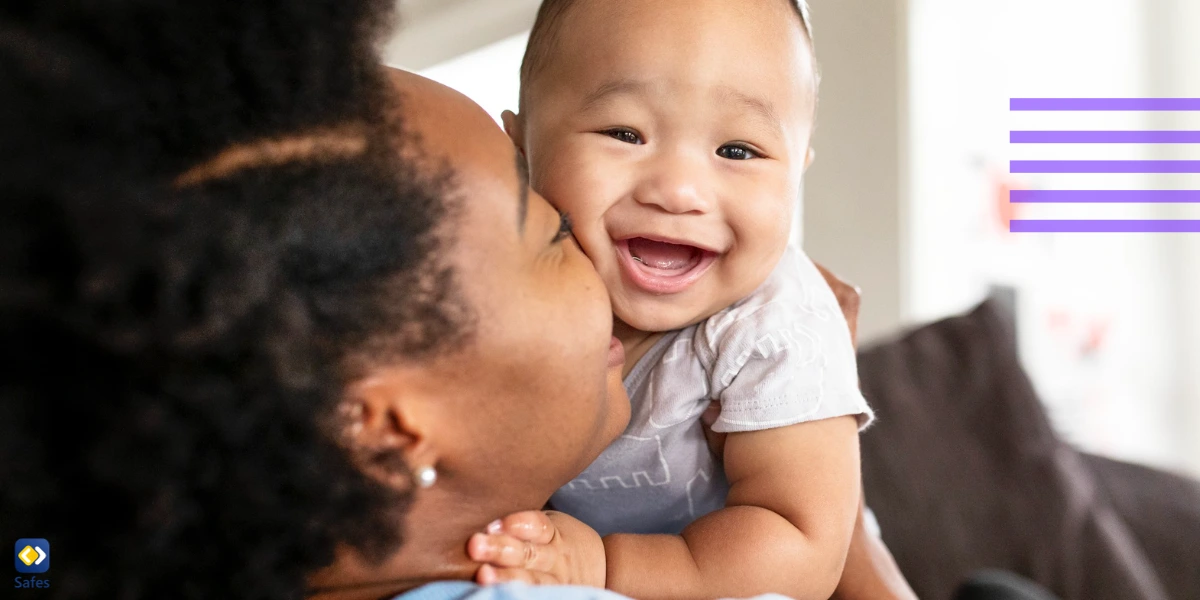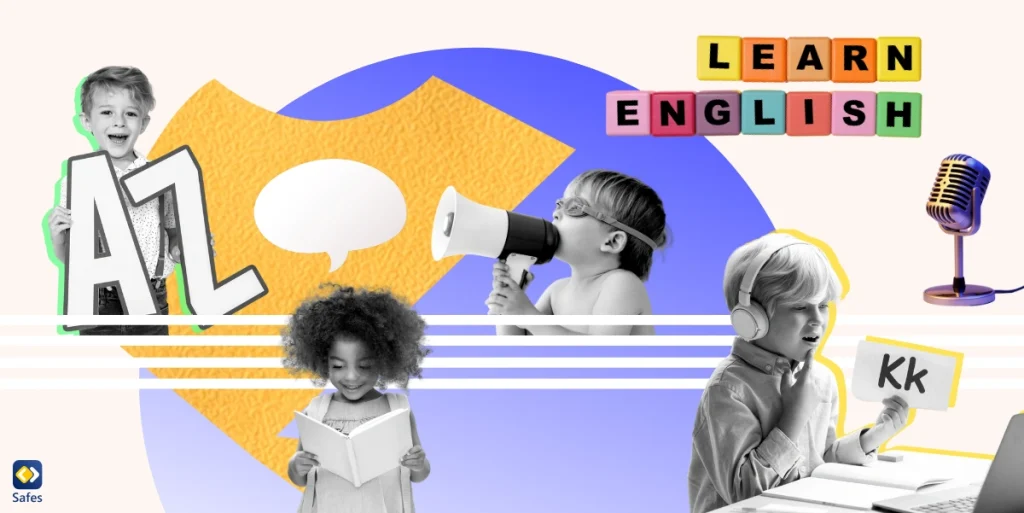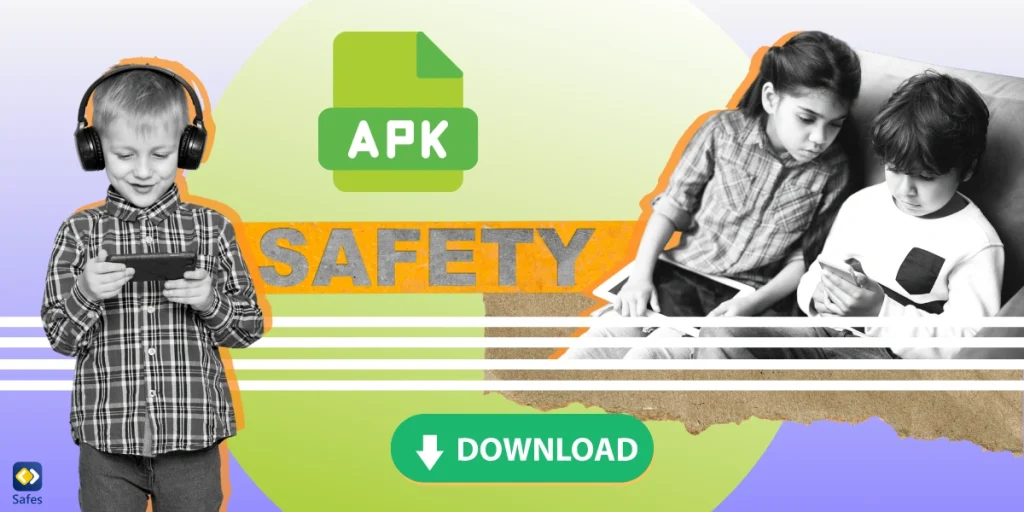When it comes to how kids effortlessly pick up language, the starting point is a straightforward question: How does a child learn the language spoken around them? Whether it’s English in Australia or Russian in Russia, the process is remarkably adaptive. In this blog post, we’ll delve into the practical aspects of how children learn language and what challenges they face in the process.
Download and Start Your Free Trial of the Safes Parental Control App
How Do Babies Learn Language?
An important question which can be our starting point is, “how can children learn any language?” As a language acquisition example, let’s say the child is born in Australia; then they’ll be learning English, whereas in Russia, they’ll learn Russian. What makes infant brains plastic enough to learn any language they’re exposed to in a relatively short time? To explain the process of language-learning that infants go through, let’s take a look at Heidi M Feldman, MD PhD, Professor of Pediatrics’ article, “How young children learn language and speech”.
We can get an idea regarding how children learn language using computer simulations. The idea is that each unit of the computer simulation that activates at the same time as another unit develops a connection with the other unit. As these communications grow, they become networks. These networks stay the same, but simulations designed to mimic the brain’s functionality and structure show us that as children learn new things, the patterns of activity between their brain cells change, leading to new networks. So, as children learn through new experiences, the way their brain works literally changes.
This means that children’s brains don’t necessarily have to have any bias or be pre-ready for a certain language. Instead, based on the environment they grow up in, in this case, the language spoken in their environment, their brain cells will base their communications and networks off that. So, as the article puts it, such computer simulations “explain how infants can learn whatever language they are exposed to.”

Challenges of Learning a First Language
Infants face specific challenges when learning their first language. Here are some of those challenges and the interesting ways in which they overcome them.
What Sounds are Words?
To an infant, all sounds are the same. To be able to differentiate between words, knowing where one word ends, and another begins is a complex activity. So how do children know what sounds are words? The answer lies in what is called “statistical learning”. If we count the sounds that occur in words, and the sounds that occur between two words, the former will be significantly more. Infants can tell the difference and learn to focus on the sound that occur more frequently, in turn making them more likely to correctly differentiate words from other sounds. This same explanation can be used to show how children learn syntax, since they notice that some sounds are heard more frequently with others.
When parents use “baby talk”, they’re really using this statistical learning to their advantage. In “baby talk”, parents usually use a limited vocabulary in short sentences. They also repeat themselves multiple times and exaggerate their intonations and pronunciations.
Where Do Babies Hear Words?
Babies have to hear language in order to learn it. According to a 2019 study, television doesn’t have as much of a positive effect on language acquisition as people often think. What facilitates learning is “Warm, mutually respectful, low stress exchanges.” This is because children’s learning is an active process, it doesn’t happen passively. For example, as they use a word and hear the discrepancy of the word’s meaning in another person’s language, they will actively look for the discrepancy and progress in learning parts of language such as syntax or semantics.

How Do Children Learn a Second Language?
If a child learns a second language before the age of three, they count as simultaneous bilinguals. The same mechanisms that work in the acquisition of the first language, also work in acquiring a second language, especially when young. This usually happens when parents are bilingual or the environment in which the child is growing up speaks a different language from what is spoken at home (such is usually the case of immigrant families).
Bilingual parents usually use code-switching as a tactic to teach a child a second language. Code-switching is the practice of changing languages mid-conversation, sometimes mid-sentence. It is a very common phenomenon among bilingual speakers. According to a 2022 study, “parents code-switched more between sentences than within a sentence” when talking to their infants. This was usually to improve their child’s vocabulary and has proven to be effective.
With all its faults, technology can help bilingualism in children. There are apps such as Duolingo that can help children as young as elementary school engage with a second language. Though, as with all things, there is a dark side to technology as well. That’s why we suggest you use a parental control app like Safes which is available on iOS and Android. Sign up for a free trial to experience it’s benefits firsthand.
Conclusion
Breaking down how kids learn language gets us into the practical side of their cognitive processes. From statistical learning to interactive exchanges, the journey from babbling to fluent speech involves hands-on experience with the language around them. Facing challenges like figuring out sounds and diving into a second language, it’s clear that kids aren’t held back by preset biases. Their language development thrives on real-life experiences and interactions, building a rock-solid cognitive and social foundation through the process of language acquisition.
Your Child’s Online Safety Starts Here
Every parent today needs a solution to manage screen time and keep their child safe online.
Without the right tools, digital risks and excessive screen time can impact children's well-being. Safes helps parents set healthy boundaries, monitor activity, and protect kids from online dangers—all with an easy-to-use app.
Take control of your child’s digital world. Learn more about Safes or download the app to start your free trial today!




